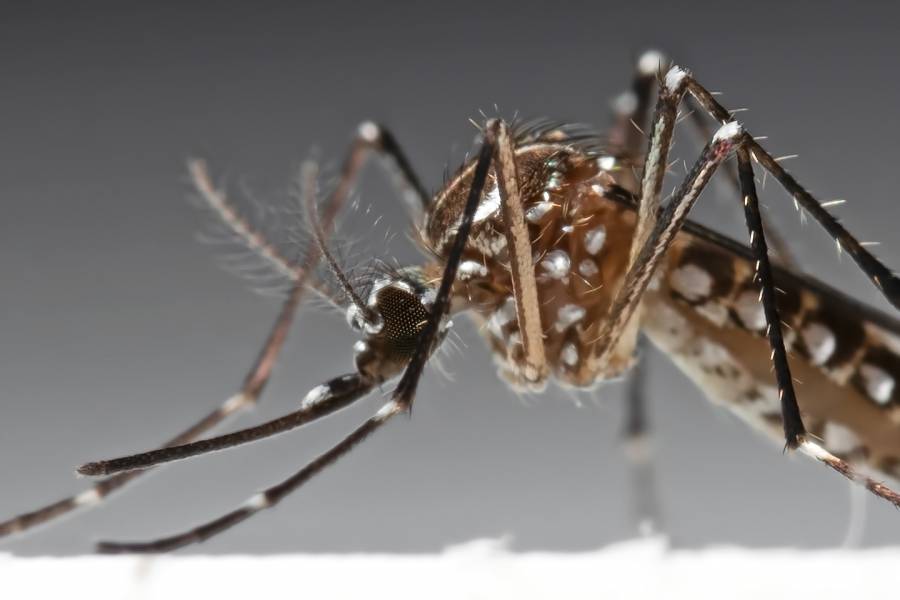If you’ve ever spent a summer barbecue clumsily clapping at the air in an effort to avoid itchy, swollen bug bites, you know smashing a mosquito isn’t easy. And if crushing the tiny insect between human hands is difficult, imagine the task of carefully removing its head and extracting its salivary glands.
In its mission to end malaria, which in 2017 killed an estimated 435,000 people, biotech company Sanaria is working to develop the world’s first FDA-licensed malaria vaccine. And that vaccine is made from malaria-causing parasites that live in the salivary glands of infected mosquitoes.
Sanaria CEO Stephen Hoffman says his team has become skilled at dissecting the insects and removing the glands by hand. “But the fact is, we want to make a vaccine for everybody who’s at risk of malaria—there’s 3.2 billion people,” he says. “That’s a lot of mosquitoes.”
Sanaria approached Johns Hopkins University to design a device that could speed up the dissection work. Professor Russell H. Taylor, a heavyweight in the field of medical robotics, and his team answered the call with a semi-automated device capable of decapitating 20 mosquitoes with the single press of a button. Once the heads are cut off, the team uses a comblike structure to squeeze out all the glands at once. It’s a major step toward Sanaria’s goal of a fully automated dissection device that would allow the team to process mosquitoes around the clock.
Taylor enlisted two undergraduate students, along with a Hopkins engineer, visiting grad student, and another professor, to work on the project. For Mariah Schrum, Engr ’18, who is now pursuing a doctorate in robotics at Georgia Tech, helping engineer the device was a high point of her undergraduate years that set her on her current path. “It was a slightly intimidating project but really exciting,” she says. “There was no prior work in this area—nothing to go off of. We had a lot of room to try out different things.”
Armed with vials of dead, uninfected mosquitoes, the team needed to figure out how to deftly drag the delicate insects around and align them into individual slots within the device. But even in death, mosquitoes remain unruly, easily becoming an awkward, tangled mess of limbs and wings. The team’s greatest revelation, Taylor says, was discovering that the mosquitoes become easier to manipulate when you grab them by the proboscis, the needlelike part that pierces our skin.
The device the team produced has been described by news outlets as a guillotine, and the comparison makes sense: It is a beheading machine. However, that term isn’t quite right, Taylor says. “We had tried to make it a guillotine,” he says. “But like a real guillotine, it ended up being more complicated than you would have thought.” An earlier version of the device used a razor blade that lowered across the necks of the lined-up mosquitoes, slicing off the heads. But a razor blade turned out to be too thick and imprecise. “It would push on the mosquitoes and knock them out of the little slots,” Taylor says. “It just wasn’t working very well.”
The team needed a method that would remove the heads while also holding the mosquito relatively still. Eventually, they hit on an idea to constrain the neck as it was cut. They tried a mechanism similar to clippers, Taylor says, thin blades that could snip the head much as you might trim a stray hair. It worked.
The semi-automated device, made of stainless steel and slightly smaller than a mousetrap, requires only a fraction of the training that technicians need to complete the dissection by hand. Sanaria is in the process of optimizing the semi-automated device, so as to be able to incorporate it into its production line. Hopkins researchers are now working with the company to develop a robotic version, inching Hoffman closer to his goal of eradicating malaria.
“That’s why this project is so important,” Hoffman says. “We know that this vaccine works. Now the question is how can we make it better—and really dramatically produce so much more of it at a lower cost, so we can make it available to everyone who needs it.”
This article originally appeared in the Fall 2019 Johns Hopkins Magazine
